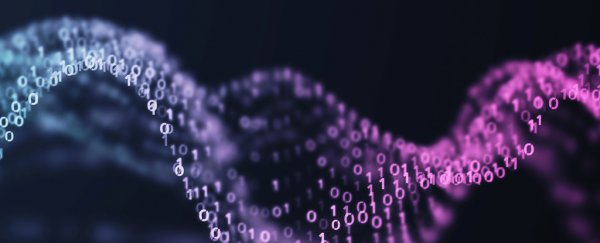If building a super-secure, super-smart 'quantum internet' is ever going to be possible, then quantum-entangled photons are likely to be essential in building it – and scientists just figured out a very useful new way of generating them.
Quantum entanglement is the phenomenon where two particles (such as photons) get linked together, irrespective of the physical distance between them. If something happens to one of the particles, something must also happen to the other.
While physicists still don't fully understand precisely how entanglement happens, this phenomenon opens up the possibility of long-range, quantum-powered communications – a quantum internet, if you will – where shifts in particles in one place result in shifts in entangled particles a vast distance away.
This particular study envisions quantum-entangled photons being used as quantum key distribution (QKD), a sort of low-level quantum internet where classical data in the form of 1s and 0s gets an extra level of privacy and security through quantum physics.
Up until now, entangled photons deployed for these encryption methods have been limited to the near-infrared light range of 700 to 1,550 nanometre wavelengths, which makes them vulnerable to interference from light-absorbing gases and solar radiation.
In other words, the data connection only works at night: not ideal for what's supposedly a next-generation internet infrastructure.
What this new research shows is how to generate and detect entangled photons in the longer 2.1 micrometre wavelength, which is protected against such interference. The end result is a much more reliable and stable communications channel.
"We have demonstrated that polarisation-entangled photon pairs can be generated, manipulated, and detected with our approach," write the researchers in their published paper.
"This work provides a new platform for quantum optics and paves the way for technological applications for quantum sensing and quantum-secured long-distance communications within this wavelength regime."
To reach their goal, the researchers used a non-linear crystal made of lithium niobate: entangled photon pairs were created via ultrashort light pulses from a laser beamed into the crystal.
The quantum internet, if we can figure out how to build it, promises to be many times more powerful, more secure and more private than anything we have today. For example, any hacking attempts would instantly break the relevant connection completely – not a bad safety net to have.
We're still a long way away from living this dream – in distance, in stability, in practicality – but innovations like the one reported here are steadily getting us closer, and turning quantum computing from a hypothesis to a reality.
"The next crucial step will be to miniaturise this system by converting it into photonic integrated devices, making it suitable for mass production and for the use in other application scenarios", says quantum physicist Michael Kues, from the Leibniz University of Hannover in Germany.
The research has been published in Science Advances.
